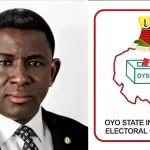The official rate of the Naira against the US Dollar has declined from N164 to N419 since the central bank’s Governor, Godwin Emefiele, took office in March 2014. (or 61 per cent weaker)
The situation is significantly worse in the parallel market, with the Naira falling from $1/N180 to $1/605. The Naira has lost 70.5 per cent of its value in the last eight years.
Battling a Tough Challenge
Despite numerous forex policies by the CBN, tilted to capital controls and demand-side management, this accelerated devaluation has transpired over just an 8-year period.
- The first round of devaluation of the naira occurred in late 2014 when oil prices fell from N165/$1 to around N187/$1.
- By 2016, the exchange rate had seen significant fluctuation, dropping to around N350/$1 and then N510/$1 before the apex bank created the Investor & Exporter window (IEFX), which helped stabilise the currency for the next two years. Between 2017 to 2021, the official rate fluctuated at N360/$1.
- It’s worth noting that, in addition to the IEFX window, the central bank offered high-interest rates to foreign portfolio investors (FPIs) in order to attract associated USD$ inflows. The CBN spent trillions of naira to pay interest on disputed OMO invoices that garnered up to $13.4 billion in FPI in 2019.
- The Naira exchange rate has continued to fall on a monthly basis at the parallel market since the Covid lockdowns in 2020. The official rate at the IEFX reflects exchange rate reductions as well, though at a lesser rate.
Promoting Dollar In-Flow To Save the Naira
The Central Bank has recently appeared to be more concerned with increasing organic dollar inflows.
- In March 2021, the CBN launched the “Naira 4 Dollar Scheme,” aiming to increase diaspora remittances into the country. This scheme works by offering an N5 reward to diaspora remittance beneficiaries for every USD$1 sent through a licensed International Money Transfer Operator (IMTO)
- The NAFEX rate was chosen as the benchmark rate by the CBN in May 2021. This effort simply meant that the CBN opted to decrease the number of official rates rather than having several official rates (e.g., CBN rate at N379/$ vs. IEFX rate at N410/$ at the time). One advantage of this measure, according to some, was that it decreased the FX subsidy by at least 7.5 per cent (N410/$ vs. $379/$).
- The CBN stated in July 2021 that it would no longer sell foreign exchange (forex) to Bureaux De Change (BDC) operators. Godwin Emefiele, the governor of the Central Bank of Nigeria, claimed that some BDC acts were in violation of the apex bank’s agreement by attempting to maximise profits that he thought excessive.
- The CBN launched the eNaira, Africa’s first digital currency, in October 2021. When opposed to cash payments, the eNaira serves as both a medium of exchange and a store of value, providing better payment prospects in retail transactions.
- The CBN moved the Naira for Dollar scheme from the IMTOs to the IEFX window in February 2022. The CBN issued guidelines stating that for every US dollar repatriated and sold at the Investors and Exporters Window, it will facilitate payment of N65.
Long-term strategic solutions
Thinking long term, the CBN is promoting the pan-African payments system (PAPSS), which eliminates the need for African countries to settle intra-African trade in US dollars. As a result, a Nigerian trader and a South African retailer can complete transactions without ever having to exchange dollars. As a result, the Naira is under even less pressure.
Structural Headwinds
It’s important highlighting that, despite the CBN’s best efforts, there are key macroeconomic factors that monetary policies alone can’t change.
In particular, inflation and economic expansion. There are frequently large outflows of capital in nations with high inflation because people are hesitant to save in that currency since inflation would erode the value of their holdings. When high inflation is combined with sluggish growth, capital flight is accelerated.
Consequently, despite the flurry of new policies designed to organically attract dollar inflows, the twin challenges of high inflation and low growth remain a stumbling block to increased dollar inflows.
The CBN has the option of raising interest rates to entice additional investors, but it has so far refrained from doing so, citing the necessity to pursue the development finance agenda in order to support economic growth.
In light of the recent spike in inflation, which is currently about 16.82 per cent, the CBN is under even more pressure to reconsider its dovish approach. In addition, the Nigerian central bank is closely monitoring developments in South Africa, Ghana, and other developing market countries that have raised interest rates.
Nigeria’s capital inflows plunged to a four-year low of $9.66 billion in 2020, only to decline further to $6.7 billion in 2021, owing to the aforementioned twin difficulties of high inflation and low growth, as well as the CBN’s low-interest-rate stance.
In the end, additional monetary policy moves, such as an interest rate hike, are likely to be required, as words and purpose alone are insufficient to attract the necessary capital inflows to arrest the current Naira depreciation.




Leave a reply